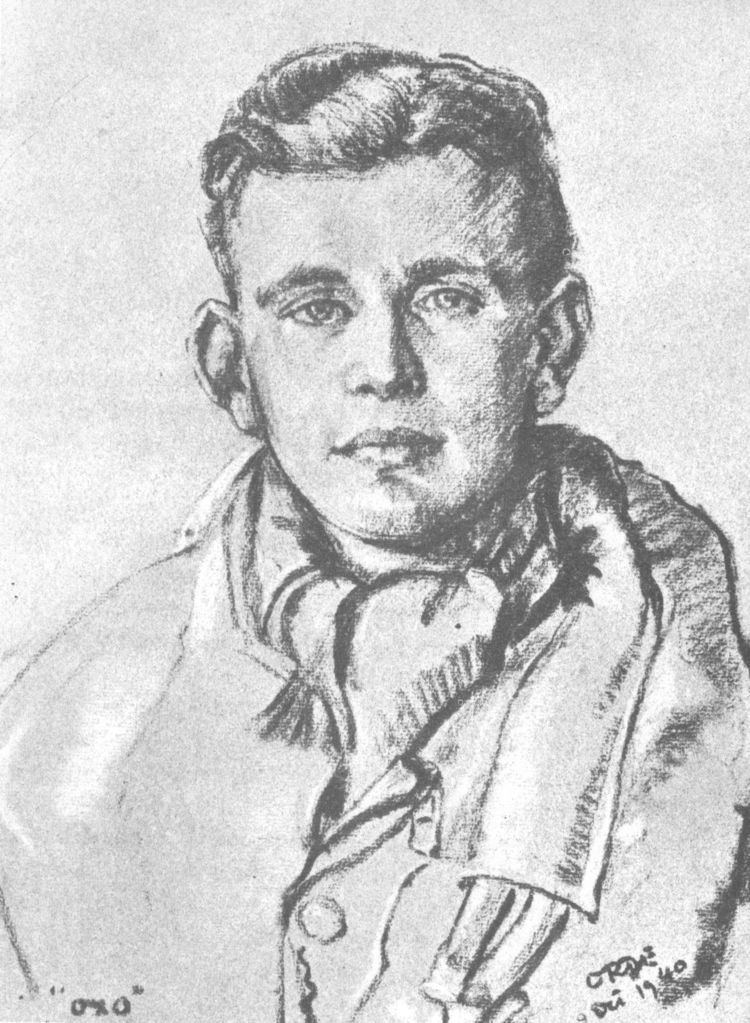Nickname(s) Bobby or Oxo Name Bobby Oxspring Service number 40743 | Allegiance United Kingdom Died August 8, 1989 Books Spitfire Command | |
 | ||
Born 22 May 1919Sheffield ( 1919-05-22 ) Commands held No. 91 Squadron RAFNo. 222 Squadron RAFNo. 24 Wing RAF Battles/wars World War IIBattle of Britain Battles and wars World War II, Battle of Britain | ||
Group Captain Robert Wardlow "Bobby" Oxspring, DFC & Two Bars, AFC (22 May 1919 – 8 August 1989) was a Royal Air Force officer and flying ace of the Second World War.
Contents

Early life and family
Oxspring was born in Sheffield on 22 May 1919. His father, also named Robert, had served in No. 54 Squadron RFC, and was a founder member and commander of No. 66 Squadron RFC during the First World War, in which he was credited with several aerial victories, and was twice awarded the Military Cross before being wounded in action during a mid-air collision on 30 April 1917.
Military career
Oxspring was granted a short service commission as an acting pilot officer on 7 May 1938, being described at the time as "a tallish, good-looking, fair-headed bloke", and served in No. 66 Squadron RAF. He was regraded to pilot officer on 7 March 1939.
Flying throughout the Battle of Britain, Oxspring was promoted to flying officer on 3 September 1940, and on 25 October was shot down in Spitfire X4170 near Capel, Kent. Known as one of the battle's great aces, he was one of the fraction of The Few selected by Fighter Command to have a portrait drawn by Cuthbert Orde, sitting for it on 9 December 1940.
On 8 November 1940 he was awarded the Distinguished Flying Cross (DFC). The citation read:
One day in September, 1940, Flight Lieutenant Oxspring was engaged on an offensive patrol with his squadron. Whilst acting as rear guard, he sighted and engaged several Messerschmitt 109's 3,000 feet above. After driving them off, he led his section in an attack against a large formation of enemy bombers and succeeded in destroying a Dornier 17 at short range and also in damaging two Heinkel III's. He has at all times led his section with skill and determination, and has destroyed six enemy aircraft.
Promoted to flight lieutenant (war substantive) on 3 September 1941, he became flight commander in No. 41 Squadron RAF, and went on to command No. 91 Squadron RAF at RAF Hawkinge, No. 222 Squadron RAF and No. 24 Wing.
He was awarded a Bar to his DFC on 18 September 1942, with the citation:
This squadron commander has rendered much valuable service. His skill, whether in attacks on the enemy's ground targets and shipping or in air combat, has been of a high order. He has destroyed at least 7 enemy aircraft.
Moving to Mediterranean combat, it is thought probable that Oxspring was the pilot who shot down renowned German ace Anton Hafner of JG 51 on 2 January 1943.
Having led his squadron to be the highest scoring in the North African theatre, and survived his second shooting down of the war, Oxspring was awarded a second Bar to his DFC in February 1943, with the citation reading:
During initial operations from forward airfields in North Africa Squadron Leader Oxspring led his formation on many sorties. He destroyed one enemy aircraft, bringing his total victories to 8. His outstanding devotion to duty and fine fighting qualities have been worthy of high praise.
On 1 January 1944 he was promoted to temporary squadron leader, and was promoted to squadron leader (war substantive) on 15 June 1944. the rank he held when the conflict ceased in 1945.
During the war he had registered 13 solo kills with 2 shared, 2 probable kills and 4 solo V-1 flying bombs destroyed and 1 shared.
After the war, on 10 January 1947, he was one of the British officers given royal recognition of the award of the Dutch Airman's Cross. He was also awarded the 1939–1945 Star with Battle of Britain clasp, the Air Crew Europe Star with France and Germany clasp, the Italy Star, and the War Medal 1939–1945.
He stayed on in the RAF, receiving a permanent commission as a flight lieutenant on 1 September 1945, and being promoted to substantive squadron leader on 1 August 1947.
He was awarded the Air Force Cross on 1 January 1949, after leading No. 54 Squadron RAF Vampires to Canada and the USA, the first jet aircraft to cross the Atlantic.
Promotion came twice more, to wing commander on 1 January 1953, and finally group captain on 1 January 1960.
He was appointed Station Commander of RAF Gatow in Berlin, where a section of the fence was the Berlin Wall. He retired on 23 February 1968.
Later life
Oxspring wrote the book Spitfire Command (1984, William Kimber & Co Ltd (publisher)], ISBN 0-7183-0537-X; republished 2003 by Cerberus, ISBN 978-1-84145-033-9).
Oxspring died on 8 August 1989, and is buried at Cranwell Parish church, Lincolnshire.
